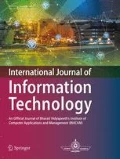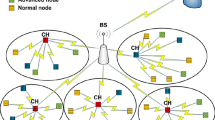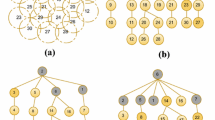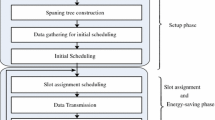Abstract
Sensor networks are used for observing some region of interest. Sensors sense different physical quantities and send to base station or sink. The tree based networks with TDMA as MAC protocol are preferable because of simplicity of tree and guaranteed data access in TDMA. Often sensor networks are multi-sink and multi-attribute networks. Multi-sink network means more than one sinks are present and so multiple sink-rooted trees are formed. When more than one types of nodes are deployed in the network, the network is known as heterogeneous network or multi-attribute network. Sometimes node density or heterogeneity is not uniform across entire network. As a result of non-uniform node distribution or non-uniform heterogeneity distribution, schedule lengths of sink-rooted trees are very different. Nodes part of trees with small schedule length will get more frequent transmission turns compared to those which belong to trees with large schedule length. To ensure fairness in terms of transmission opportunities, it is desired that schedule lengths should be balanced. In this work, an algorithm named as Schedule Length Balancing for Multi-sink HeTerogeneous networks (SLBMHT) is presented to balance schedule lengths. The SLBMHT algorithm is evaluated through simulations. It is found that the SLBMHT algorithm results in 8–56% reduction in schedule length difference of trees. It also results in 2–17% energy savings during data transmission phase. Only demerit is increase in control overhead. But as resulting increase in energy consumption is not much, it is overcome by savings in data energy consumption. Thus network lifetime is likely to increase.








Similar content being viewed by others
References
Wang F (2011) Networked wireless data collection: issues, challenges and approaches. IEEE Commun Surv Tutor 13(4):673–687
Ren F et al (2012) Attribute-aware data aggregation using potential-based dynamic routing in wireless sensor networks. IEEE Trans Parallel Distrib Syst 14(5):881–892
Vasavada T, Srivastava S (2017) Schedule length balancing for aggregated convergecast in multiple sinks wireless sensor networks. In: IEEE regions 10 symposium (TENSYMP), Cochin, India
Vasavada T, Srivastava S (2016) Distributed scheduling and tree formation for heterogeneous wireless sensor networks. In: IEEE international conference on advanced networking and telecommunication systems (ANTS), Bangalore, India
Bagga M et al (2015) Distributed low latency data aggregation scheduling in wireless sensor networks. ACM Trans Sens Netw 11(3):1–36
Zhang C et al (2015) Load-balancing routing for wireless sensor networks with multiple sinks. In: 12th IEEE international conference on fuzzy systems and knowledge discovery (FSKD), Zhangjiajie, China
Sia YK et al (2014) Spanning multi-tree algorithms for load balancing in multi tree wireless sensor networks with heterogeneous traffic generating nodes. In: International conference on frontiers of communications. networks and applications, Malaysia
Wang C et al (2009) A load balanced routing algorithm for multi sink wireless sensor network. In: IEEE international conference on communication software and networks (ICCSN), Macau, China
Wu C et al (2008) A novel load balanced and lifetime maximization routing protocol in wireless sensor networks. In: IEEE vehicular technology conference, Singapore
Eghbali AN et al (2009) An energy efficient load-balanced multi-sink routing protocol for wireless sensor networks. In: 10th IEEE international conference on telecommunications, Zagreb, Croatia
Jiang H et al (2014) Energy optimized routing algorithm in multi sink wireless sensor networks. Int J Appl Math Inf Sci 8(1):349–354
Yu B et al (2011) Minimum time aggregation scheduling in multi-sink sensor networks. In: 8th annual IEEE communications society conference on sensor, mesh and ad hoc communications and networks, Salt Lake City, UT, USA
Carlos-Mancilla M et al (2014) An efficient reconfigurable ad-hoc algorithm for multi-sink wireless sensor networks. Int J Distrib Sens Netw 13(9):1–26
Bhattacharjee S et al (2017) Energy efficient multiple sink placement in wireless sensor network. In: 4th international conference on networking, systems and security (NSysS), Bangladesh, Dhaka
Bose P et al (2017) Bacteria foraging algorithm based optimal multi sink placement in wireless sensor networks. J Intell Syst 27(4):609–618
Author information
Authors and Affiliations
Corresponding author
Rights and permissions
About this article
Cite this article
Vasavada, T., Srivastava, S. Algorithm for fairness in schedule lengths of sink-rooted trees in multi-sink heterogeneous wireless sensor networks. Int. j. inf. tecnol. 12, 1117–1132 (2020). https://doi.org/10.1007/s41870-020-00490-0
Received:
Accepted:
Published:
Issue Date:
DOI: https://doi.org/10.1007/s41870-020-00490-0




